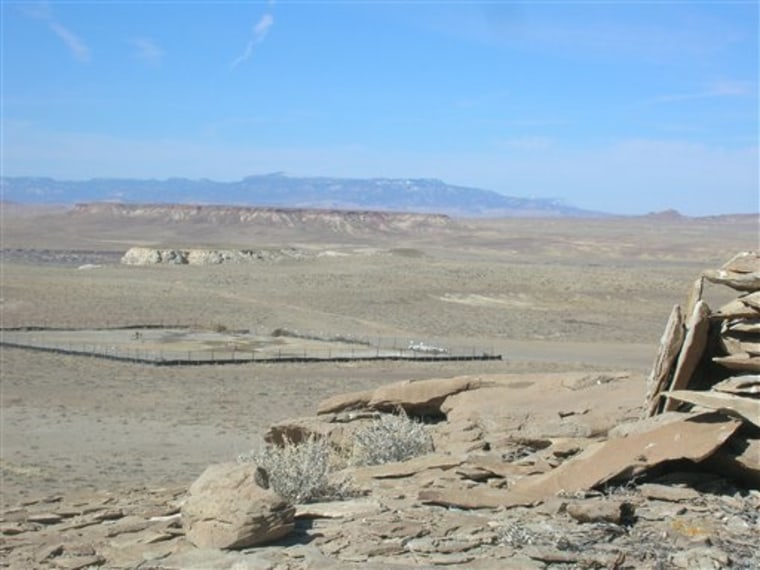Both environmentalists who have been fighting a proposed coal-fired power plant on the Navajo Nation and supporters of the project expected it: an air permit for the plant.
On Thursday, the Environmental Protection Agency signed off on the permit for the Desert Rock Energy Project, which the agency says will set a new standard for coal-fired plants in the United States.
Navajos hailed the EPA's decision as necessary to improve conditions on their vast reservation, while environmentalists proclaimed it "a sad day" and prepared to appeal.
The EPA had filed a consent decree in June, agreeing to act on the permit that sets limits for emissions covered under the federal Clean Air Act as part of the settlement of a lawsuit that the developers of the $3 billion project filed against the agency.
The Navajo Nation's Dine Power Authority and Houston-based Sithe Global Power are partnering to build the 1,500-megawatt plant near Farmington in northwestern New Mexico. The air permit was considered a major hurdle before construction could begin. An environmental impact statement also needs approval.
Navajo President Joe Shirley Jr. said the benefits of Desert Rock, which include $50 million in annual revenues to the tribe and thousands of jobs, outweigh the environmental concerns.
Navajos, who regard the earth as their mother and the sky as their father, are "doing the best we can to do our part to take care of the environment," Shirley said.
"At the same time, we know that the deities want us to take care of ourselves, to stand on our own two feet, as individuals, as families, as a community, as a nation," he said in an interview Thursday. "And that's certainly what Desert Rock is about."
Gov. Bill Richardson and New Mexico Environment Secretary Ron Curry planned an immediate appeal of the EPA's decision, claiming the agency violated the Clean Air Act in issuing the permit.
"EPA is bending to the will of corporate, financial and misguided political interests that will pollute New Mexico's skies," Richardson said in a statement. "EPA's decision ignores its obligations to protect the health of residents and the environment in New Mexico and the region. We will not allow this ill-advised decision to stand."
Dailan Long of Dine Citizens Against Ruining Our Environment called the decision irresponsible and inappropriate.
"It is a devastating blow to tribal members who continually suffer from the large coal complex encroaching upon our land," he said in a statement.
The Navajo Nation, which stretches into New Mexico, Utah and Arizona, is rich with natural gas, uranium and low-sulfur coal. Tribal officials say the reservation's coal can be mined for the next 200 years.
On Thursday, President Bush said coal should be part of the solution to reduce dependence on foreign oil and that he would use his last six months in office to push new energy plans that include electricity from coal.
Without global warming emission controls, Rep. Henry Waxman, D-Calif., said it is reckless to approve Desert Rock.
"This one massive plant will negate the emissions reductions being implemented by the northeastern states in the first mandatory regional program to cut global warming pollution," said Waxman, chairman of the House Committee on Oversight and Government Reform. "The administration's shameful decision rewards polluters, flouts the Clean Air Act and fails the American people."
EPA officials contend their approval process was thorough and involved comprehensive analyses that will ensure that pollution levels safeguard public health and the environment.
A review of the more than 1,000 comments on the permit led to additional monitoring requirements for organic compounds, lead, sulfuric acid, hydrogen fluoride and visible emissions, said Colleen McKaughan, a Southwest region deputy air division director for the EPA. The EPA also lowered limits for nitrogen oxide, a precursor for ozone, she said.
McKaughan said those who commented on the air permit and the consent decree can appeal the EPA's decision to the agency's Environmental Appeals Board, which has the final say on all administrative decisions. The EPA received nearly 100 submissions on the consent decree.
